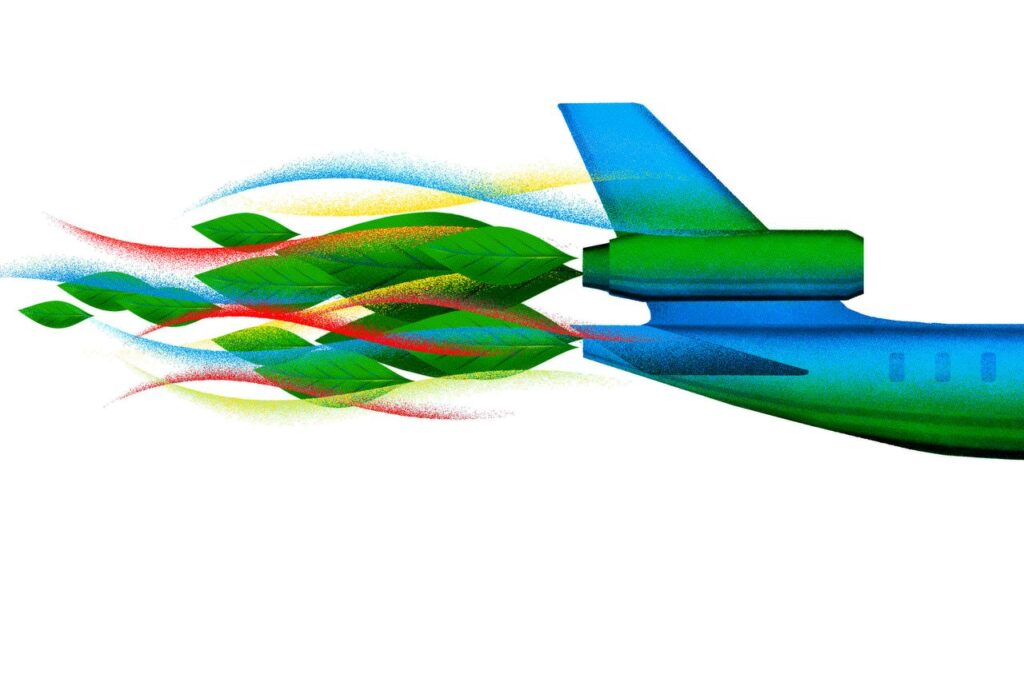
The Potential of Biofuels in Reducing Aviation Carbon Footprint
Introduction
In recent years, there has been growing concern about the environmental impact of the aviation industry, particularly its contribution to carbon emissions. As a result, there is an increasing interest in exploring alternative fuels that can reduce the carbon footprint of aviation. Biofuels have emerged as a potential solution to this challenge, offering the possibility of sustainable and low-carbon aviation. This article aims to delve into the topic of biofuels’ potential to reduce aviation carbon footprint, highlighting its relevance and importance in addressing this pressing issue.
Historical Background
The history of biofuels in aviation dates back to the early 2000s, when airlines and researchers began experimenting with blending conventional jet fuels with bio-derived alternatives. The emergence of biofuels as a potential solution to reduce carbon emissions can be attributed to the environmental concerns associated with traditional fossil fuels. As the aviation industry faced mounting pressure to reduce its carbon footprint, biofuels gained traction as a viable alternative.
Over the years, the adoption and implementation of biofuels in the aviation industry have progressed significantly. Several airlines and airports have conducted successful trials and commercial flights using biofuels, demonstrating their feasibility and potential. These initiatives paved the way for increased research and investment in biofuel production and usage in aviation.
Key Concepts and Definitions
To fully understand the potential of biofuels in reducing aviation carbon footprint, it is important to define key concepts and terms. Biofuels can be broadly defined as fuels derived from renewable sources, such as plant-based feedstocks or waste materials. Within the aviation context, sustainable aviation fuel (SAF) and advanced biofuels are the primary types of biofuels being explored.
Aviation carbon footprint refers to the total greenhouse gas emissions generated by the aviation industry. It encompasses not only carbon dioxide (CO2) emissions but also other greenhouse gases like methane and nitrous oxide. Measuring the aviation carbon footprint involves calculating the emissions generated throughout the entire lifecycle of an aircraft, including fuel production, aircraft operation, and end-of-life disposal.
Carbon intensity and lifecycle analysis are two important concepts related to biofuels and aviation carbon footprint. Carbon intensity refers to the amount of carbon emissions produced per unit of energy or fuel consumed. Lifecycle analysis, on the other hand, assesses the environmental impact of a product or process throughout its entire lifecycle, considering factors such as raw material extraction, production, transportation, use, and disposal.
 Main Discussion Points
Main Discussion Points
Benefits of biofuels in reducing aviation carbon footprint
Biofuels have the potential to significantly reduce greenhouse gas emissions compared to traditional jet fuels. They can achieve a substantial reduction in carbon dioxide emissions, as well as mitigate the release of other harmful pollutants.
The utilization of biofuels in aviation has the potential to achieve carbon neutrality or even carbon negativity. By utilizing feedstocks that absorb more carbon dioxide during their growth, biofuels can effectively offset emissions from aircraft operations.
Biofuels play a crucial role in supporting the decarbonization goals of the aviation industry. They provide a viable path towards reducing emissions and achieving sustainability targets, helping the industry transition to a greener and more environmentally friendly future.
Challenges and limitations of biofuels in aviation
The availability and scalability of biofuels for aviation remain a significant challenge. While some feedstocks, such as algae and certain crops, show promise, their commercial production on a large scale is still in the early stages. The limited availability of feedstocks poses a constraint on the widespread adoption of biofuels.
The economic implications and cost competitiveness of biofuels also present challenges. Currently, biofuels are generally more expensive than traditional jet fuels, making their widespread adoption financially burdensome for airlines. However, as technology advances and economies of scale are achieved, the cost gap is expected to narrow.
Potential concerns associated with biofuel production include land use and food security. The cultivation of biofuel feedstocks may compete with agriculture for arable land, potentially leading to issues related to food production and availability. It is crucial to ensure that biofuel production is sustainable and does not compromise food security.
Technological advancements and research efforts in biofuels for aviation
Ongoing research and development efforts are focused on improving biofuel production processes. This includes exploring new methods of feedstock cultivation, optimizing conversion technologies, and enhancing blending ratios to maximize the efficiency and effectiveness of biofuels.
Innovations in feedstock selection have the potential to bolster the viability of biofuels for aviation. Scientists and researchers are exploring alternative feedstocks that are not in direct competition with food crops, such as algae and municipal waste, to overcome the limitations of conventional feedstocks.
Partnerships and collaborations between governments, airlines, and research institutions are crucial in advancing biofuel adoption in the aviation industry. These collaborations foster knowledge sharing, support funding initiatives, and accelerate the development and implementation of sustainable biofuel solutions.

Case Studies or Examples
Several airlines and airports have embraced biofuels as a means to reduce their carbon emissions. For example, United Airlines, Cathay Pacific, and KLM have conducted successful flights using biofuels, showcasing the feasibility of their usage in commercial aviation.
Successful biofuel implementation projects have demonstrated the significant impact of biofuels in reducing carbon emissions. These projects have resulted in substantial greenhouse gas reductions and have paved the way for further biofuel adoption in the aviation industry.
Notable initiatives and policies have been launched to support and incentivize biofuel adoption in the aviation sector. For instance, the International Civil Aviation Organization (ICAO) has set targets for biofuel usage, and various countries have implemented mandates and tax incentives to encourage the production and usage of sustainable aviation fuel.
Current Trends or Developments
Recent years have witnessed an increase in biofuel production and consumption in aviation. Advances in technology, coupled with supportive policies and regulations, have contributed to the growth of the biofuel market in the aviation industry.
Regulatory frameworks and incentives play a crucial role in driving biofuel market growth. Governments worldwide are implementing measures to promote the adoption of biofuels, such as blending mandates, tax incentives, and research funding. These initiatives are expected to further propel the demand for biofuels in aviation.
Recent research findings and breakthroughs have shed light on the immense potential of biofuels in aviation. Scientists are continuously discovering new feedstock options, improving conversion technologies, and optimizing production processes, further unlocking the possibilities of biofuels in reducing aviation carbon footprint.
Challenges or Controversies
The sustainability and environmental impact of biofuels have been subjects of criticism and concern. Some argue that certain biofuel feedstocks may contribute to deforestation, biodiversity loss, and increased greenhouse gas emissions if not produced sustainably. Ensuring the sustainability of biofuel production is crucial to avoid unintended negative consequences.
The debate surrounding the use of food crops for biofuel production raises questions about its impact on food security. Critics argue that diverting agricultural resources to biofuel production could exacerbate global hunger and food scarcity. Striking a balance between biofuel production and food production is essential to address these concerns.
Trade-offs between biofuels and other decarbonization strategies in aviation exist. While biofuels offer significant emissions reductions, other strategies like improved aircraft efficiency and air traffic management also play a role in reducing carbon footprint. Achieving a comprehensive and sustainable solution requires a holistic approach that considers multiple strategies.
Future Outlook
The future of biofuels in aviation looks promising, with further growth and adoption expected. As technology advances and economies of scale are achieved, biofuels are projected to become more cost-competitive and widely available, driving their increased usage in the aviation industry.
Policy and regulation will play a crucial role in shaping the future of biofuel adoption. Continued support from governments and international organizations, along with the implementation of effective policies and incentives, will be instrumental in driving the transition towards a more sustainable aviation industry.
Emerging technologies and alternative approaches hold the potential to further reduce aviation carbon footprint. Continued research, innovation, and collaboration among stakeholders will be essential in exploring new possibilities, such as synthetic fuels and electric aviation, to complement the role of biofuels in achieving decarbonization goals.

Conclusion
In conclusion, biofuels have significant potential in reducing aviation carbon footprint and mitigating the environmental impact of the aviation industry. While challenges and controversies exist, advancements in technology, research efforts, and supportive policies are driving the growth and adoption of biofuels in aviation. Continued research, innovation, and collaboration among stakeholders are crucial to realize the full potential of biofuels and catalyze the transition towards a greener and more sustainable aviation industry.




